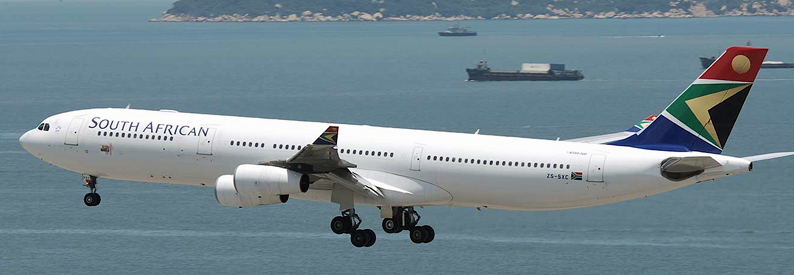South African Airways A340 Flight Narrowly Avoids Stall at High Altitude

The German Federal Bureau of Aircraft Accident Investigation has posted a final report on a “serious incident” on an South African Airways SAA plane in 2018, in which the crew temporarily lost control of a fully loaded passenger Airbus 340-600 over Swiss airspace.
The report was posted on 23 June this year after the bureau finalised the investigation report.
The incident occurred when a change in wind conditions at high altitude caused the aircraft to overspeed. The pilot in command deactivated the autopilot and steered the aircraft into a climb. The report says that at 40 000 feet, “the maximum angle of attack was reached several times” activating a warning that the aircraft could stall.
While the pilot then initiated a descent, stabilising the aircraft, incorrect procedures were applied, and his actions were “insufficient”, putting the aircraft at risk of stalling at high altitude.
According to the report:
- Due to the dynamic pitch-up control inputs of the Pilot in Command (PIC), the subsequent climb, and the low engine thrust in flight idle, rapid deceleration of airspeed and triggering of the stall warning occurred.
- Due to the erroneous application of the Operations Emergency Bulletin (OEB) No. 49, the aircraft was close to a stall at high altitude.
- The PIC’s control inputs during the active stall warning were insufficient and not energetic enough to stabilise the flight path in time.
- Crew cooperation during the overspeed condition and the stall recovery was erroneous in regard to the analysis of the situation and the implementation of procedures.
The report also found that the crew was insufficiently trained and SAA’s flight simulator had outdated software. While the flight control primary computer on the simulator used software version W6.3, that of the aircraft was version W10. The main difference between the two was the emphasis on the airspeed at which the autopilot will automatically deactivate.
“Deficits in the flight crew training concerning the application of OEB No. 49 were determined,” it concludes.
The report notes that since the incident occurred, SAA has taken various safety steps to remedy the shortcomings. These include updating the training of pilots and simulator software, a new briefing packet for long-haul flights and additional “upset recovery” simulator training.
In a statement in response to the report’s publication, SAA said on Thursday it was aware of the report and noted that it related to an incident in 2018.
“Both SAA and the SA Civil Aviation Authority had previously completed and provided input to the German Investigative Authority prior to business rescue and subsequent restructuring. Initial mitigations identified were implemented and have been recognised in the final report. The final report has been concluded with comments from stakeholders,” it said.
Sources: AirGuide Business airguide.info, news24.com, South African Airways SAA
